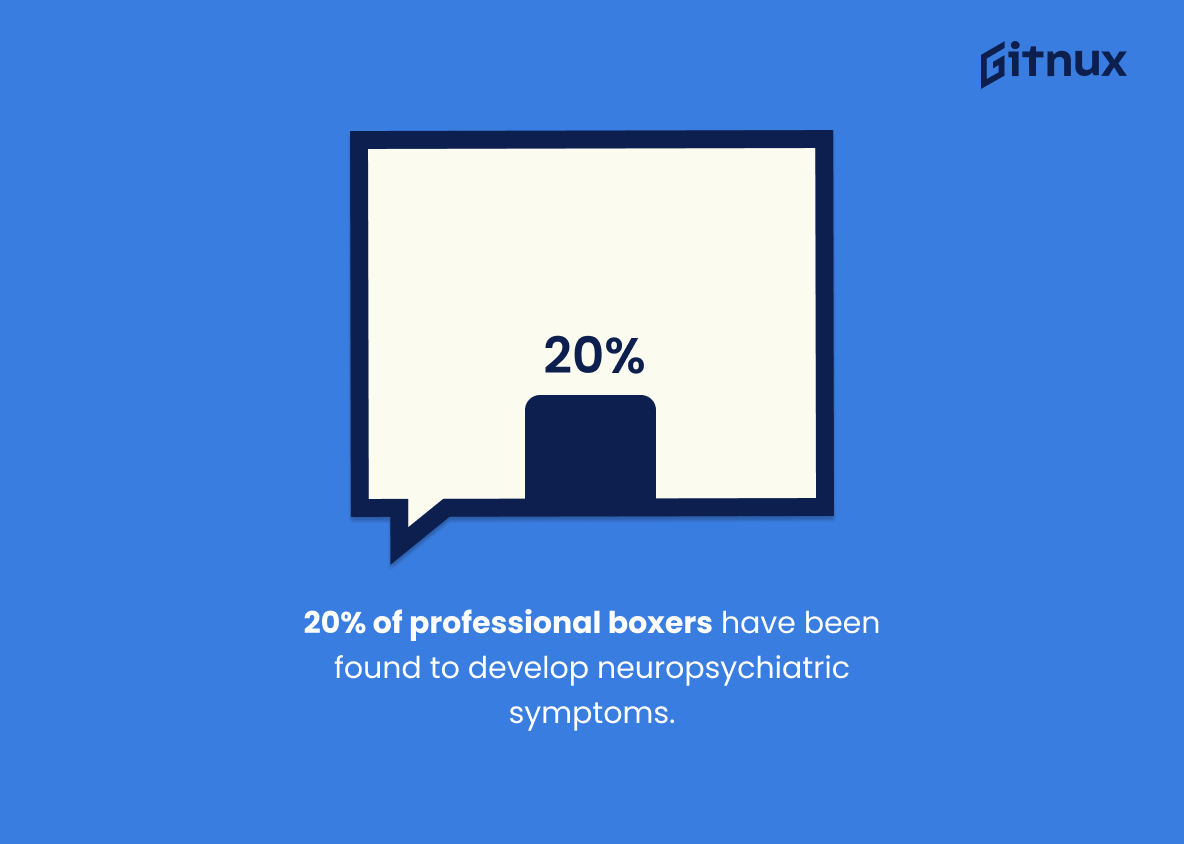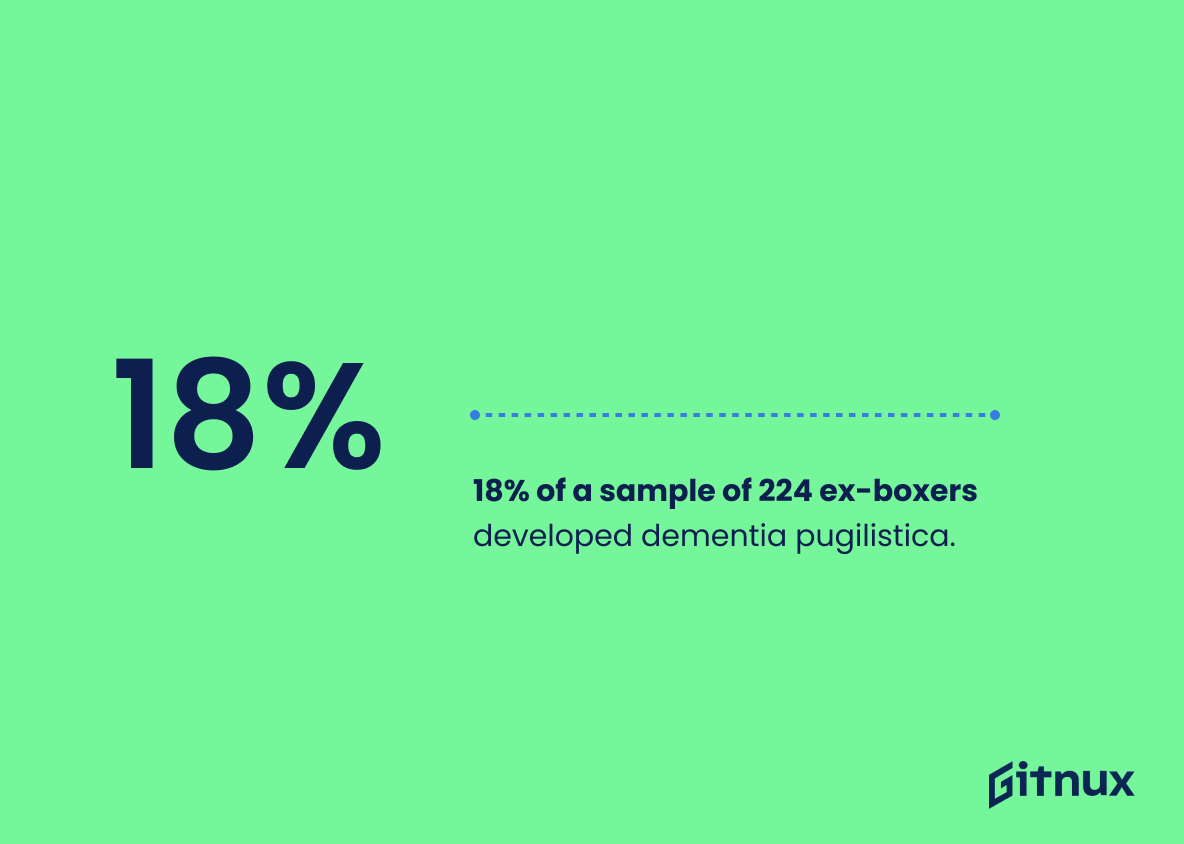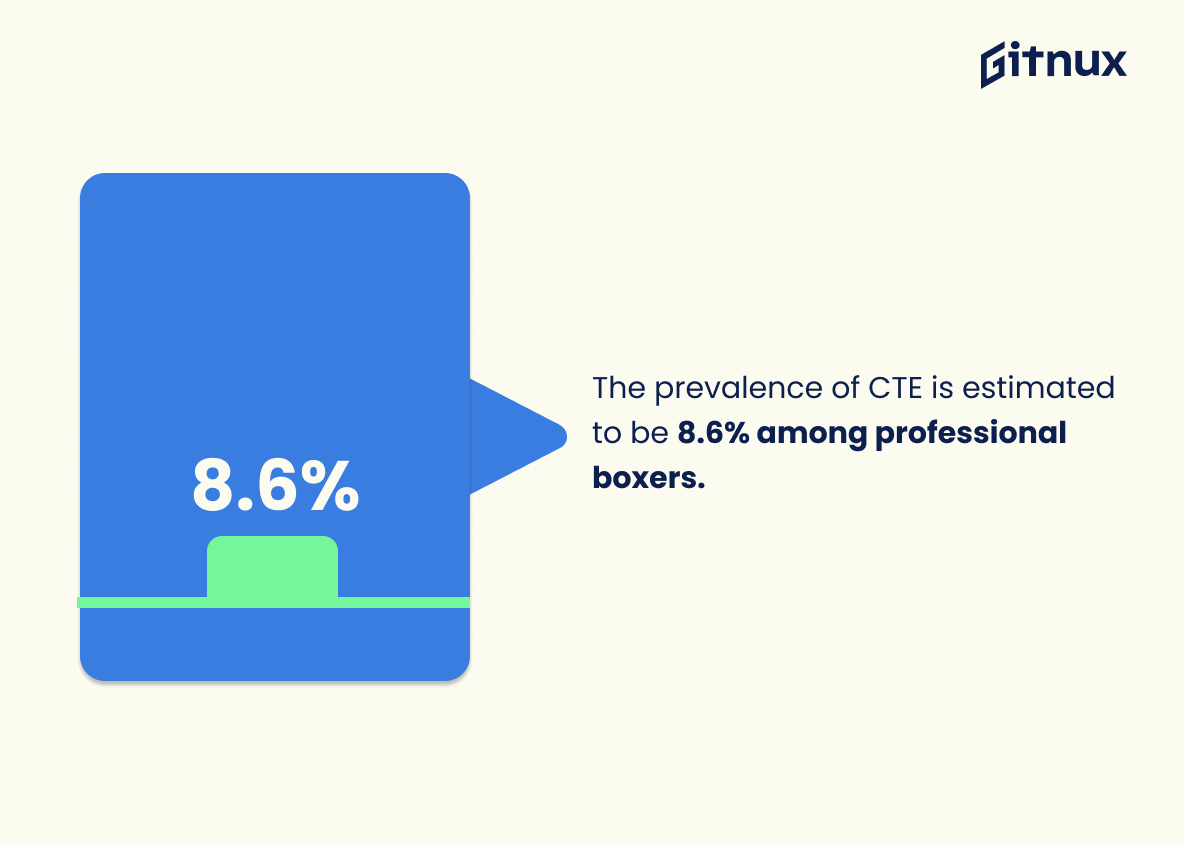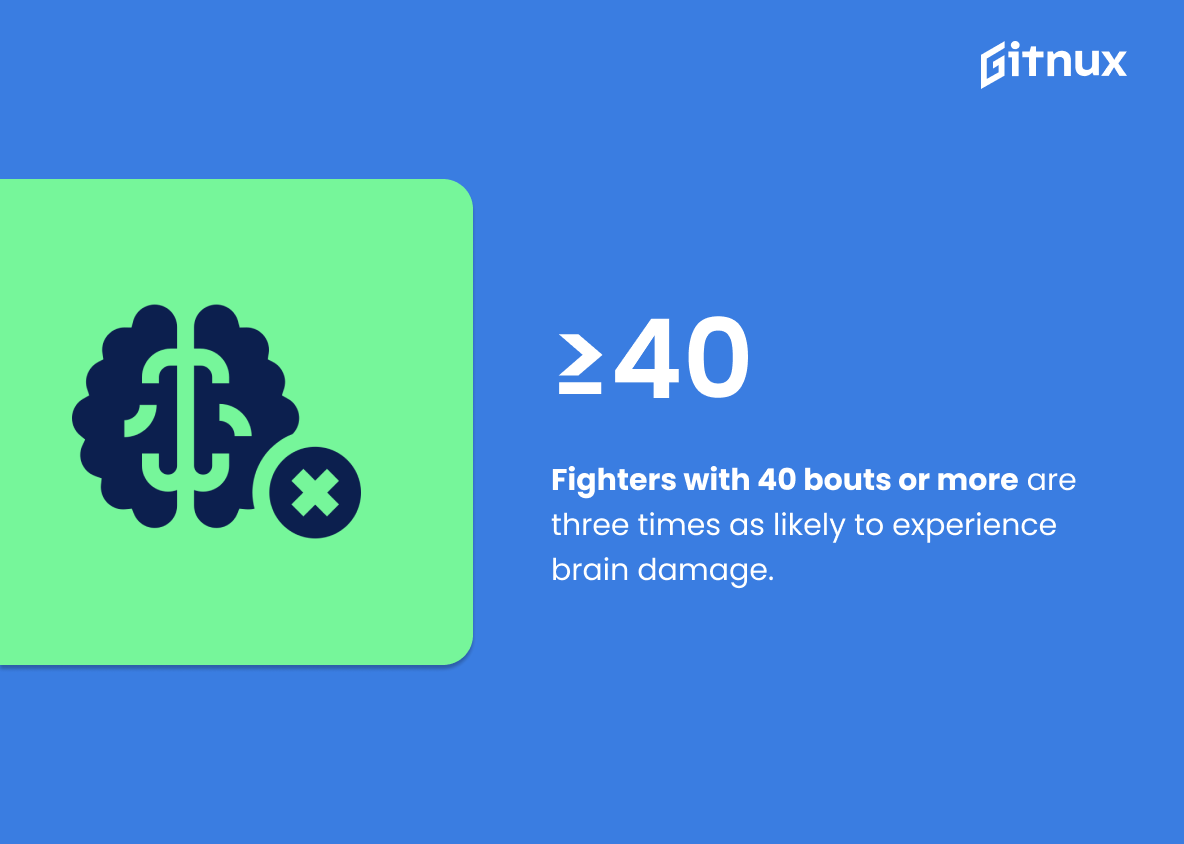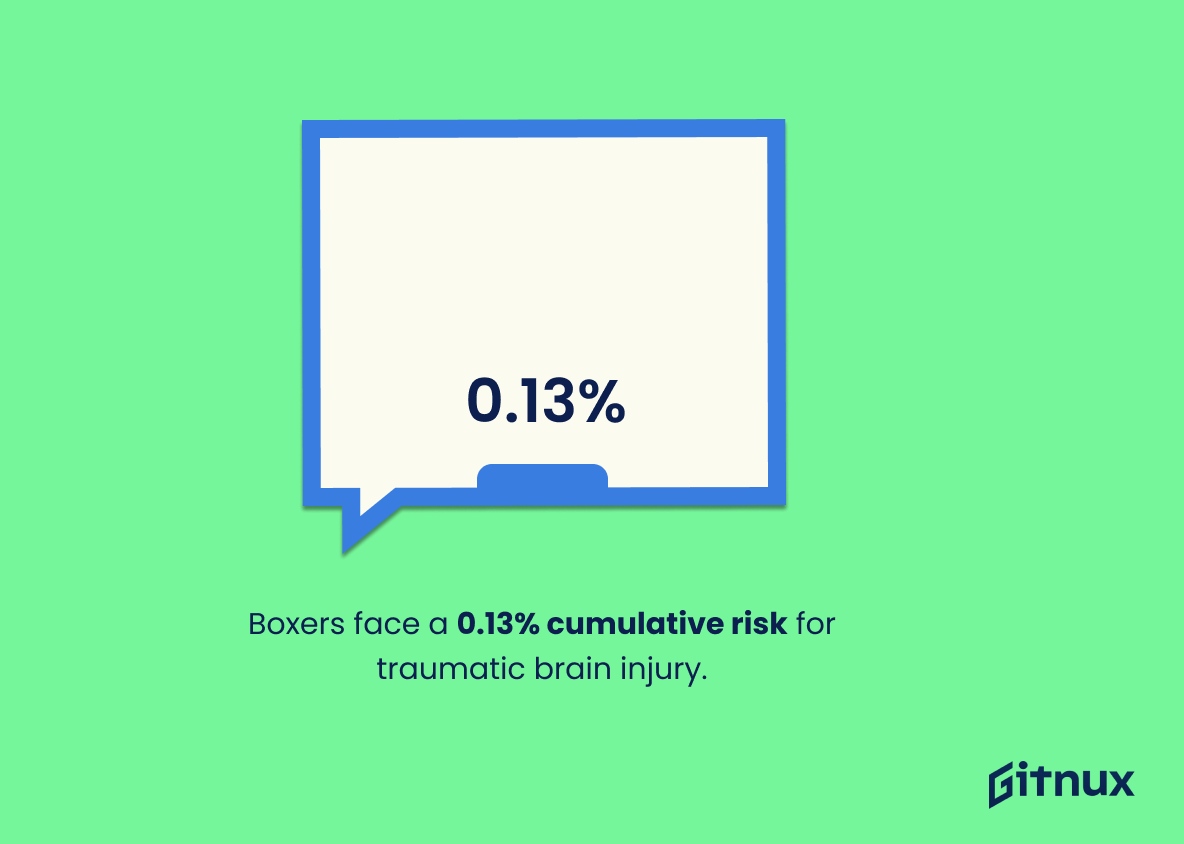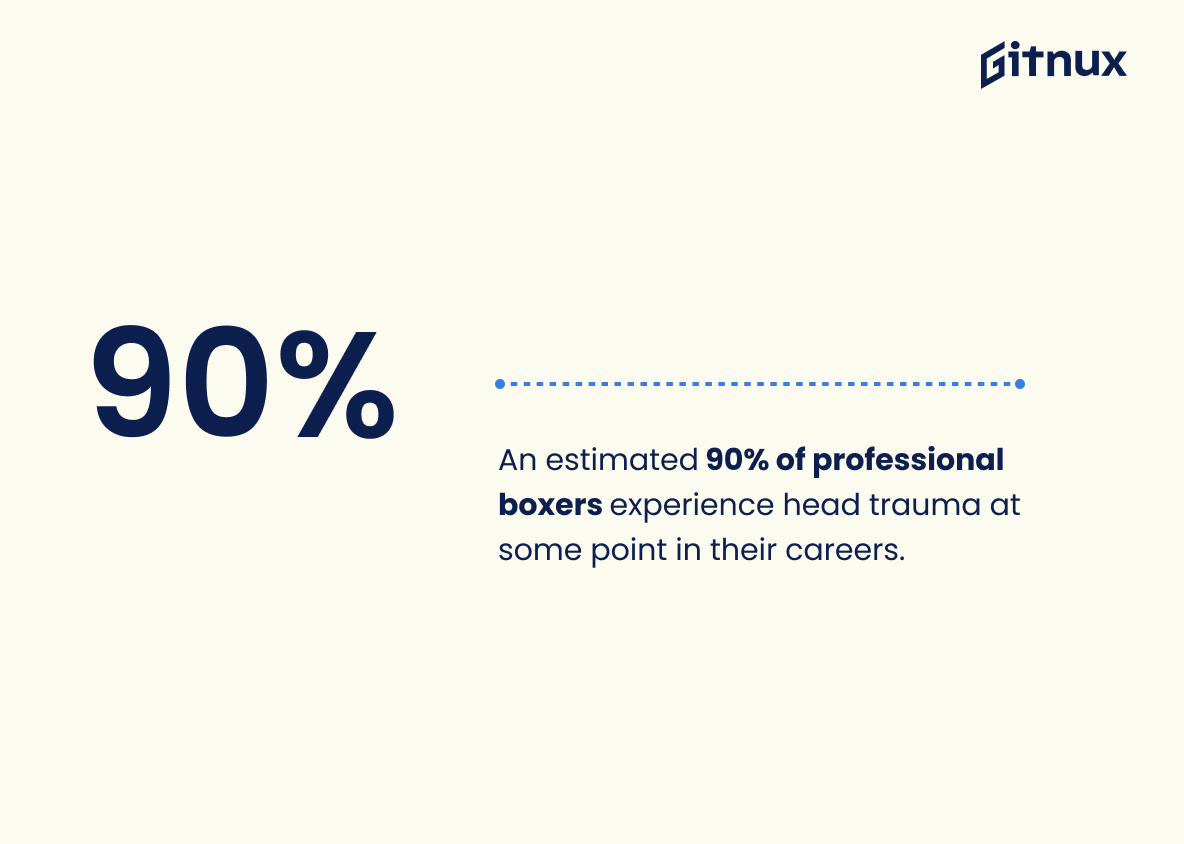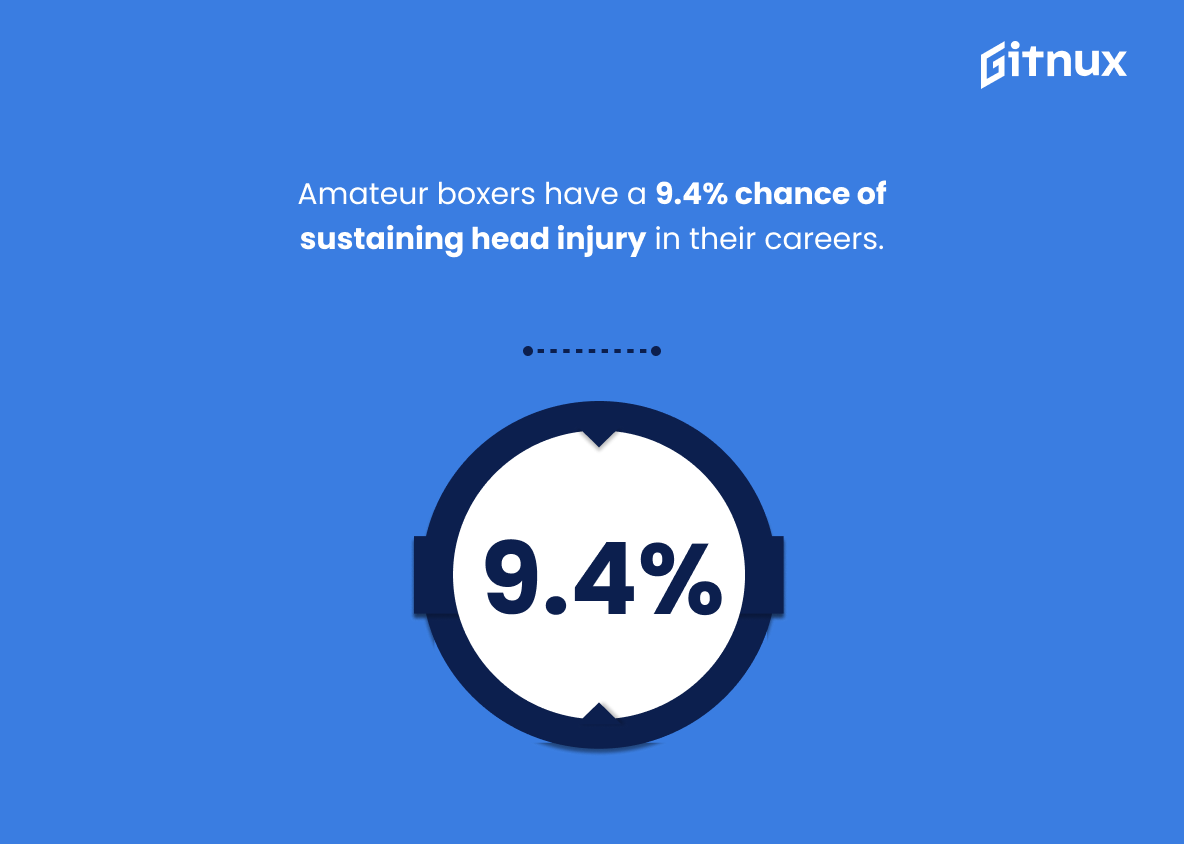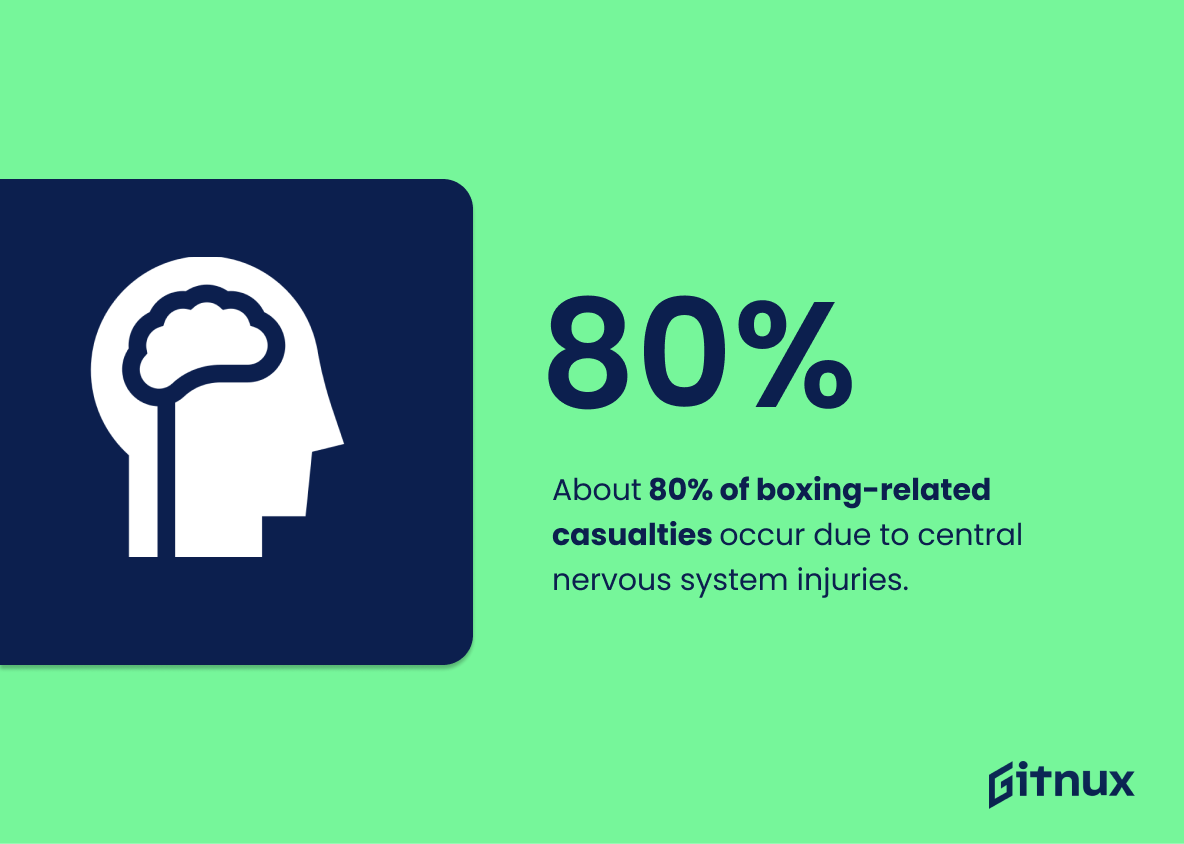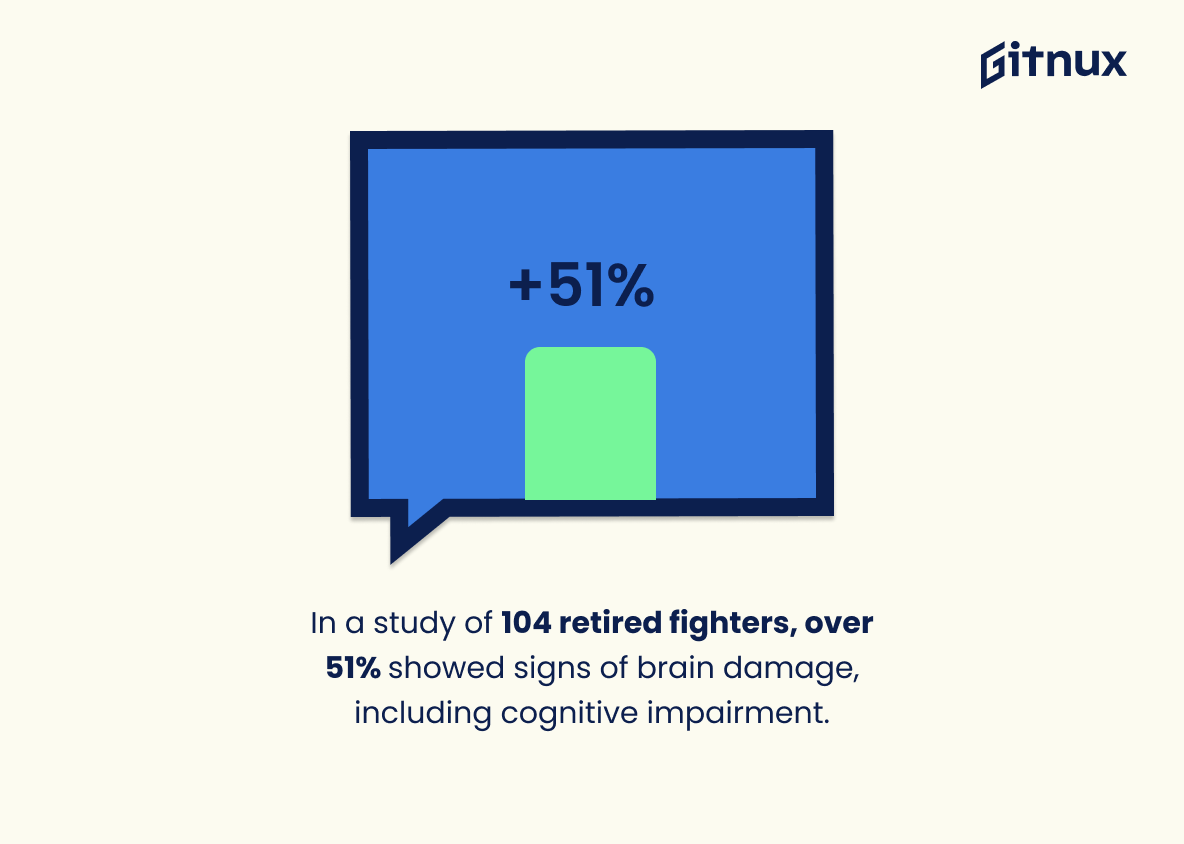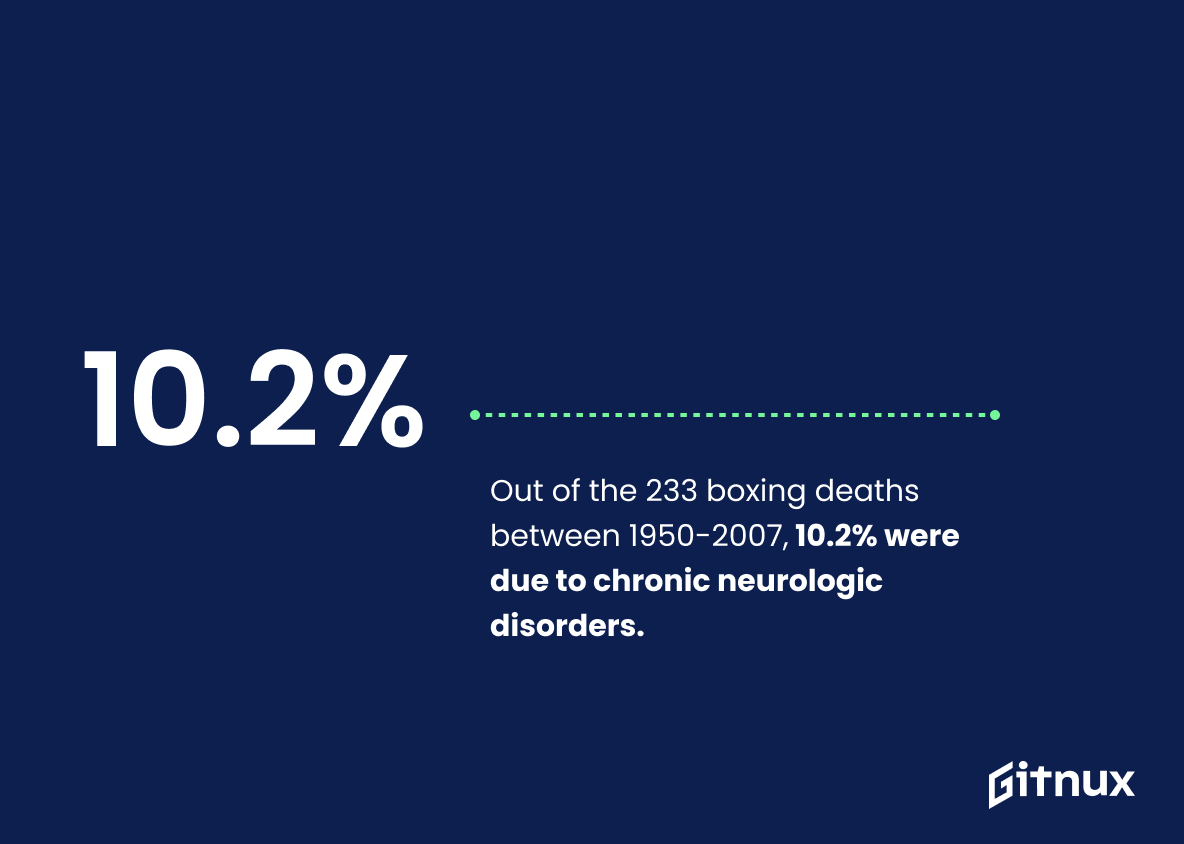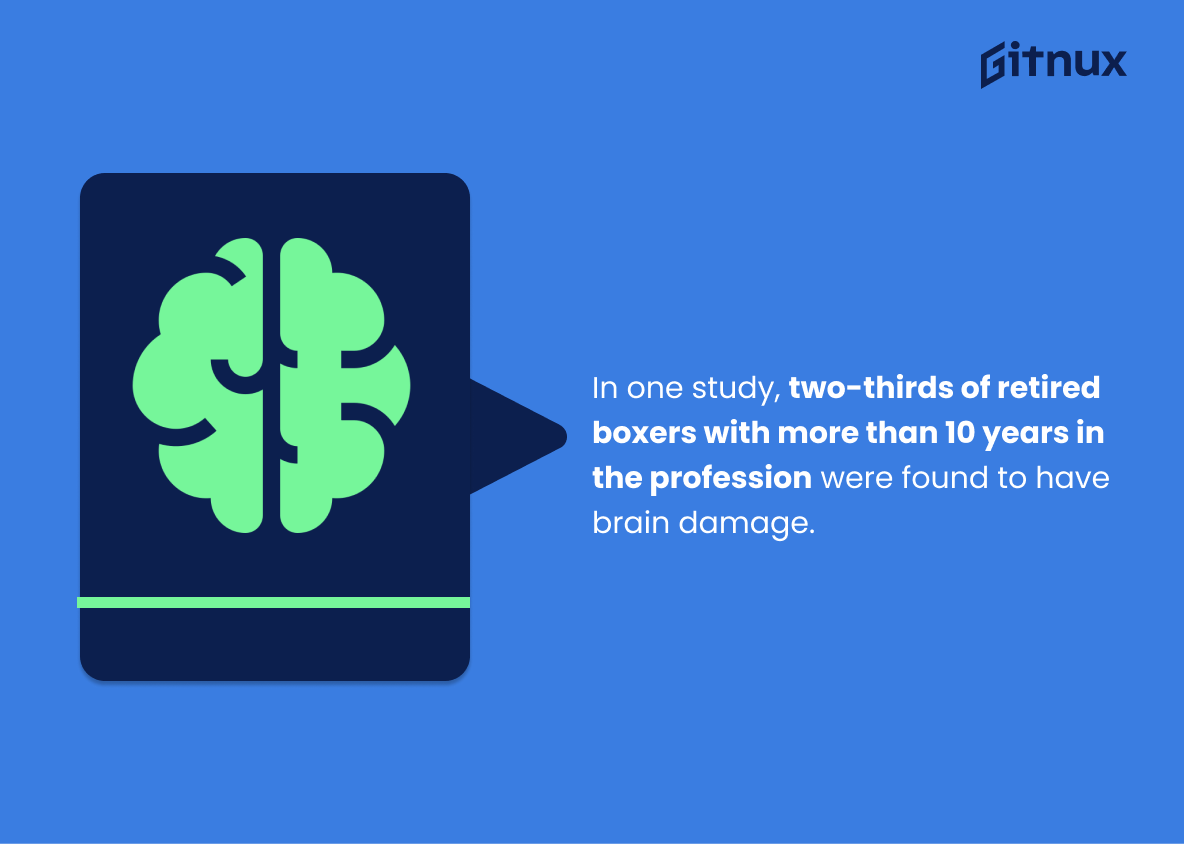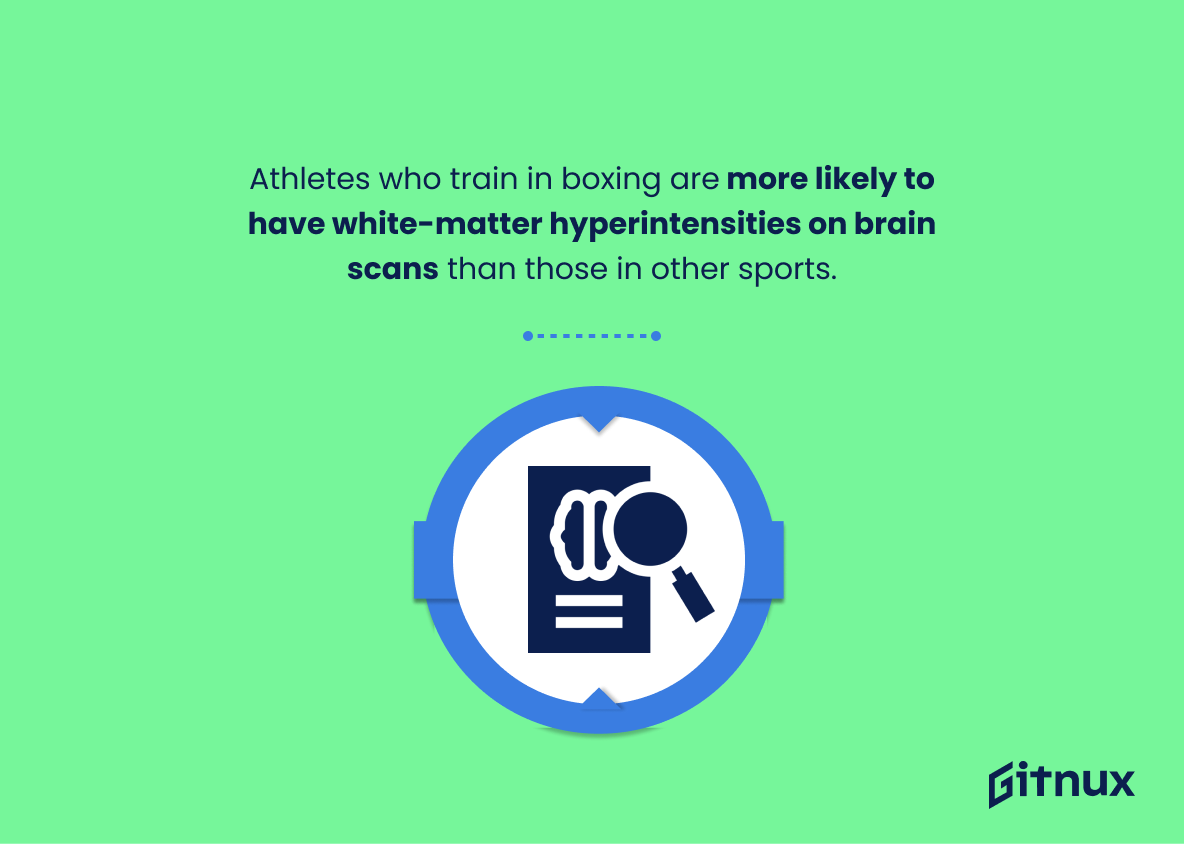The statistics on boxing brain damage are alarming. Studies have found that 15-40% of ex-boxers show signs of chronic brain injury, and the risk increases by 14 times in professional boxers. 17% of those who fight 12 bouts annually experience chronic traumatic encephalopathy (CTE), while 20% develop neuropsychiatric symptoms. 18% developed dementia pugilistica, 8.6% had CTE among professionals, 80% died from brain trauma, 30 % showed abnormal results in imaging tests with 40 or more fights under their belt; 0.13%, a cumulative risk for TBI was reported; 90%, head trauma at some point during their career; 31%, neurological disorders after 150+ bouts; 11%, MRI scans consistent with brain injury were seen in 500 fighters studied and 20 % cognitive impairment before fighting 707 pros respectively.
Amateur boxers face 9.4 % chance to sustain head injuries whereas 233 deaths between 1950 – 2007 saw 10 .2 percent due to neurologic disorder out which two thirds retired boxer having over 10 years profession experienced it too , athletes training boxing likely to have white matter hyperintensities than other sports as well . These facts make it clear that there is an urgent need for further research into the long term effects of boxing on the human body and mind so we can better protect our athletes from potential harm caused by this sport.
This statistic is a stark reminder of the potential long-term consequences of boxing. It highlights the fact that a significant portion of ex-boxers have been found to suffer from chronic brain injury, a condition that can have a devastating impact on their quality of life. It serves as a warning to those considering taking up the sport, and a call to action for those in the boxing community to take steps to protect the health of its participants.
The risk of chronic traumatic brain injuries increases by 14 times in professional boxers.
This statistic is a stark reminder of the dangers of professional boxing, highlighting the immense risk of chronic traumatic brain injuries that boxers face. It serves as a powerful warning to those considering taking up the sport, and a reminder of the importance of taking the necessary safety precautions.
Boxing Brain Damage Statistics Overview
17% of boxers who have 12 bouts annually experience chronic traumatic encephalopathy (CTE).
This statistic is a stark reminder of the dangers of boxing, as it highlights the fact that a significant portion of boxers who have 12 bouts annually are at risk of developing chronic traumatic encephalopathy (CTE). It serves as a warning to those considering taking up the sport, and to those already involved in it, that the risks of long-term brain damage are real and should not be taken lightly.
20% of professional boxers have been found to develop neuropsychiatric symptoms.
This statistic is a stark reminder of the potential dangers of boxing, as it highlights the fact that a significant portion of professional boxers have been found to suffer from neuropsychiatric symptoms. It serves as a warning to those considering taking up the sport, and emphasizes the importance of taking the necessary precautions to protect oneself from the potential risks associated with boxing.
18% of a sample of 224 ex-boxers developed dementia pugilistica.
This statistic is a stark reminder of the potential long-term consequences of boxing. It highlights the fact that a significant portion of ex-boxers have developed dementia pugilistica, a condition that can have a devastating impact on a person’s life. It serves as a warning to those considering taking up the sport, and a call to action for those in the boxing community to take steps to reduce the risk of brain damage.
The prevalence of CTE is estimated to be 8.6% among professional boxers.
This statistic is a stark reminder of the dangers of boxing and the potential for long-term brain damage. It highlights the fact that professional boxers are at a significantly higher risk of developing CTE than the general population, making it an important statistic to consider when discussing the risks of boxing.
A study of 23 retired professional boxers showed a 30% abnormal rate of results in brain-imaging tests.
This statistic is a stark reminder of the potential long-term consequences of boxing. It highlights the fact that even after retirement, boxers may still be at risk of suffering from brain damage due to their time in the ring. This statistic serves as a warning to current and future boxers, as well as to those who may be considering taking up the sport.
Fighters with 40 bouts or more are three times as likely to experience brain damage.
This statistic serves as a stark reminder of the potential consequences of engaging in boxing for extended periods of time. It highlights the fact that the more bouts a fighter has, the more likely they are to suffer from brain damage, and thus should be taken into consideration when assessing the risks of the sport.
Boxers face a 0.13% cumulative risk for traumatic brain injury.
This statistic is a stark reminder of the potential danger that boxers face when they step into the ring. It highlights the fact that even a small cumulative risk of traumatic brain injury can have serious consequences for a boxer’s health and wellbeing. It serves as a warning to those considering taking up the sport, and a reminder to those already involved to take the necessary precautions to protect themselves.
An estimated 90% of professional boxers experience head trauma at some point in their careers.
This statistic is a stark reminder of the dangers of boxing, highlighting the fact that the vast majority of professional boxers are exposed to head trauma at some point in their careers. It serves as a warning to those considering taking up the sport, and a reminder of the need for greater safety measures to protect boxers from the long-term effects of brain damage.
20% of boxers in a study of 707 professionals showed signs of cognitive impairment on a pre-fight exam.
This statistic is a stark reminder of the potential dangers of boxing, as it indicates that a significant portion of professional boxers are at risk of cognitive impairment due to their sport. It serves as a warning to those considering taking up the sport, and a call to action for those already involved in it to take steps to protect their mental health.
Amateur boxers have a 9.4% chance of sustaining head injury in their careers.
This statistic is a stark reminder of the potential risks associated with amateur boxing. It highlights the fact that head injuries are a real and present danger for those who choose to participate in the sport, and serves as a warning to those considering taking up the sport. It is a sobering reminder that the consequences of boxing can be serious and long-lasting.
About 80% of boxing-related casualties occur due to central nervous system injuries.
This statistic is a stark reminder of the dangers of boxing, highlighting the fact that the majority of injuries sustained in the sport are to the central nervous system. It serves as a warning to those considering taking up the sport, and a reminder to those already involved to take extra precautions to protect themselves.
In a study of 104 retired fighters, over 51% showed signs of brain damage, including cognitive impairment.
This statistic is a stark reminder of the potential consequences of boxing. It highlights the fact that more than half of retired fighters have experienced some form of brain damage, including cognitive impairment. This statistic serves as a warning to those considering taking up the sport, and a call to action for those in the boxing community to take steps to protect fighters from the long-term effects of brain damage.
Out of the 233 boxing deaths between 1950-2007, 10.2% were due to chronic neurologic disorders.
This statistic serves as a stark reminder of the potential long-term consequences of boxing, with 10.2% of deaths in the sport being attributed to chronic neurologic disorders. It highlights the importance of understanding the risks associated with boxing and taking the necessary precautions to protect the health of boxers.
In one study, two-thirds of retired boxers with more than 10 years in the profession were found to have brain damage.
This statistic is a stark reminder of the potential consequences of a career in boxing. It highlights the fact that, despite the glamour and excitement of the sport, there is a real risk of long-term damage to the brain. This statistic serves as a warning to those considering a career in boxing, and a reminder to those already in the profession to take the necessary precautions to protect their health.
Athletes who train in boxing are more likely to have white-matter hyperintensities on brain scans than those in other sports.
This statistic is a stark reminder of the potential risks associated with boxing. It highlights the fact that athletes who train in boxing are more likely to suffer from white-matter hyperintensities on brain scans than those in other sports, indicating that the physical impacts of boxing can have long-term consequences on the brain. This is an important statistic to consider when discussing the potential dangers of boxing and the need for safety measures to be taken to protect athletes.
Conclusion
The statistics presented in this blog post demonstrate the serious risks associated with boxing. From a 15-40% rate of chronic brain injury among ex-boxers to an 80% chance of sustaining head trauma for amateur boxers, it is clear that there are significant dangers involved in participating in the sport.
Furthermore, professional boxers have been found to be at risk for developing neuropsychiatric symptoms and dementia pugilistica as well as having higher rates of abnormal results on brain imaging tests than those who do not participate in boxing. These findings suggest that more needs to be done to protect athletes from potential long-term neurological damage caused by their participation in the sport.
References
0. – https://www.www.tandfonline.com
1. – https://www.med.stanford.edu
2. – https://www.www.irishexaminer.com
3. – https://www.www.thelancet.com
4. – https://www.www.ncbi.nlm.nih.gov
5. – https://www.jnnp.bmj.com
6. – https://www.www.neurologyadvisor.com
7. – https://www.www.braininjurylawofseattle.com
8. – https://www.pubmed.ncbi.nlm.nih.gov

